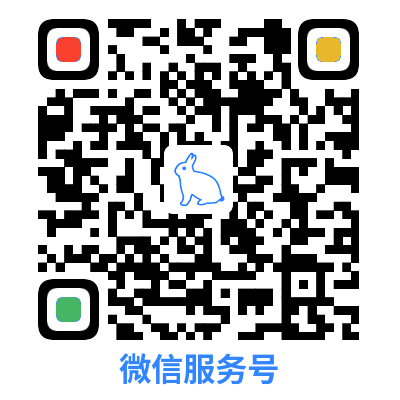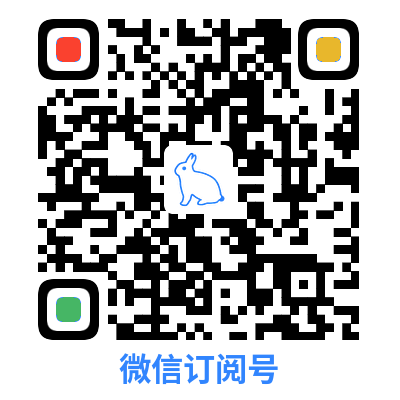示例图

首先,在index.html引入天地图资源,vue3选择v4版本
- <script src="http://api.tianditu.gov.cn/api?v=4.0&tk=你的秘钥" type="text/javascript"></script>
-

地图弹框示例代码
- <template>
- <div style="width: 100%" @click="show">
- <slot></slot>
- <!-- 弹框组件 -->
- <BasicModal
- width="1000px"
- @register="registerModal"
- @ok="submit"
- @cancel="handleCancel"
- destroy-on-close
- :title="'请选择点位'"
- >
- <div class="mb-2">
- <Input id="tipinput" v-model:value="searchValue" :placeholder="'请填写详细地址'"/>
- <a-button type="primary" @click="search">搜索</a-button>
- </div>
- <!-- 使用天地图容器 -->
- <div id="mapDiv" ref="wrapRef" style="width: 100%; height: 500px">
- <div id="Tip" v-if="showCurrent">当前坐标:{{longitude}}-{{latitude}}</div>
- </div>
- </BasicModal>
- </div>
- </template>
-
- <script setup lang="ts">
- import { onMounted, ref ,nextTick,toRefs } from 'vue';
- import { BasicModal, useModal } from '/@/components/Modal';
- import { Input, message } from 'ant-design-vue';
- import GpsIcon from '/@/assets/images/gps.png';
- const emits = defineEmits(['success', 'cancel']);
-
- // 天地图相关数据绑定
- const mapInstance = ref(null as any);
- // 搜索区域内容
- const searchValue = ref('');
- // 变量保存Maker实例
- const currentMaker = ref(null as any);
- // 经度
- const longitude = ref('');
- // 纬度
- const latitude = ref('');
- // 判断当前坐标是否显示
- const showCurrent = ref(false);
- // 在setup函数顶部声明缓存位置信息的ref
- const lastSelectedLocation = ref({ longitude: '', latitude: '' });
- // 地理编码服务相关的变量
- let geocoder: any = null;
- const siteInfo = ref({
- longitude: '',
- address: '',
- latitude: ''
- });
- const props = defineProps({
- // 添加初始经纬度props
- initialLongitude: {
- type: String,
- default: '',
- },
- initialLatitude: {
- type: String,
- default: '',
- },
- // ... 其他props不变 ...
- });
- const { initialLongitude, initialLatitude } = toRefs(props);
-
- const [registerModal, { closeModal, openModal }] = useModal();
-
- declare global {
- interface Window {
- T: any;
- TMAP_VECTOR_MAP: any;
- }
- }
- var T = window.T;
- // 初始化天地图
-
- <style scoped>
- #mapDiv {
- width: 100%;
- height: 100vh;
- }
- .mb-2 {
- display: flex;
- }
- #Tip {
- position: absolute;
- color: #424B5A;
- font-weight: bold;
- font-size: 14px;
- bottom: 40px;
- left: 18px;
- z-index: 999;
- }
- </style>
这段代码是Vue组件中的一部分,主要功能是实现了天地图的初始化和地图功能的绑定。
- const initTiandituMap = async () => {
- var map: any = null;
- var T = window.T;
- map = new T.Map("mapDiv");
- map.setMapType(window.TMAP_VECTOR_MAP);
- // 根据传入的初始经纬度进行定位
- if (initialLongitude.value && initialLatitude.value) {
- map.centerAndZoom(new T.LngLat(Number(initialLongitude.value) ,Number(initialLatitude.value) ), 7);
- const newMarker = createNewMarker(new T.LngLat(initialLongitude.value, initialLatitude.value));
- map.addOverLay(newMarker);
- currentMaker.value = newMarker;
- } else {
- map.centerAndZoom(new T.LngLat(97.53662, 35.36499), 7);
- }
- mapInstance.value = map;
- map.addEventListener('click', (val: any) => {
- handleMapClick(val);
- });
- };
- const handleMapClick = (val: any) => {
- if (currentMaker.value) {
- console.log(currentMaker.value,'有之前点位信息');
- mapInstance.value.removeOverLay(currentMaker.value);
- }
- siteInfo.value.longitude = val.lnglat.lng;
- siteInfo.value.latitude = val.lnglat.lat;
- longitude.value = val.lnglat.lng;
- latitude.value = val.lnglat.lat;
- showCurrent.value = true;
- const icon = new T.Icon({
- iconUrl: GpsIcon,
- iconSize: new T.Point(30, 30),
- iconAnchor: new T.Point(15, 15),
- });
- const newMarker = new T.Marker(val.lnglat);
- newMarker.setIcon(icon);
- mapInstance.value.addOverLay(newMarker);
- currentMaker.value = newMarker;
- };
- onMounted(() => {
- geocoder = new window.T.Geocoder();
- initTiandituMap();
- });
- function show() {
- openModal();
- // 确保在模态框打开且DOM更新后初始化或重新初始化地图
- nextTick(() => {
- initTiandituMap(); // 直接调用 initTiandituMap
- searchValue.value= '';
- longitude.value = '';
- latitude.value = '';
- showCurrent.value = false; // 默认不显示当前坐标
- });
- }
- const search = () => {
- console.log(searchValue.value,'search');
- const map:any = mapInstance.value;
- if (!geocoder || !searchValue.value) return;
- // 清除地图上覆盖物
- if (currentMaker.value) {
- mapInstance.value.removeOverLay(currentMaker.value);
- }
- geocoder.getPoint(searchValue.value, function(result) {
- if (result) {
- if (result.status == 0) {
- map.panTo(result.getLocationPoint(), 16);
- const newMarker = createNewMarker(result.getLocationPoint());
- map.addOverLay(newMarker);
- map.clearOverLays();
- updateCoordinates(newMarker.getPosition());
- } else {
- message.error(`搜索失败: ${result.getMsg()}`);
- }
- }
- });
- };
- function createNewMarker(position: any) {
- const icon = new T.Icon({
- iconUrl: GpsIcon,
- iconSize: new T.Point(30, 30),
- iconAnchor: new T.Point(15, 15),
- });
- const marker = new T.Marker(position);
- marker.setIcon(icon);
- return marker;
- }
- function updateCoordinates(position: any) {
- longitude.value = position.lng;
- latitude.value = position.lat;
- showCurrent.value = true;
- siteInfo.value.longitude = position.lng;
- siteInfo.value.latitude = position.lat;
- }
- // 在submit函数中更新缓存的位置信息
- function submit() {
- lastSelectedLocation.value = { longitude: siteInfo.value.longitude, latitude: siteInfo.value.latitude };
- emits('success', {
- latitude: siteInfo.value.latitude.toString(),
- longitude: siteInfo.value.longitude.toString(),
- });
- closeModal();
- }
- function handleCancel() {
- emits('cancel');
- closeModal();
- }
- </script>
表单封装

把我们封装好的地图弹框引入给于事件传参
表单组件示例代码
-
- <div>
- <FormItemRest>
- <MapModal v-model:value="location" @success="handleSuccess"
- :initial-longitude="location.longitude"
- :initial-latitude="location.latitude"
- >
- <div calss="map" style="display:flex">
- <div><a-input
- readonly
- :disabled="disabled"
- :placeholder="placeholder"
- v-model:value="location.longitude"
- :size="size"
- :bordered="bordered"
- @blur="emit('blur')"
- style="min-width: 150px"
-
- >
- </a-input></div>
- <div style="margin:5px 10px">
- -
- </div>
- <div> <a-input
- readonly
- :disabled="disabled"
- :placeholder="placeholder"
- v-model:value="location.latitude"
- :size="size"
- :bordered="bordered"
- @blur="emit('blur')"
- style="min-width: 150px"
- >
- </a-input></div>
- <div style="margin:5px 10px;">
- <Icon icon='mdi:map-marker-radius-outline' />
- </div>
- </div>
-
- </MapModal>
- </FormItemRest>
- </div>
-
-
- <style scoped>
- .map{
- display: flex;
- }
- </style>
-
这段代码是Vue的一个模板,用于渲染一个包含地图模态框和两个输入框的表单项。其中:
- <script>
- import { Form } from 'ant-design-vue';
- import { MapModal } from '/@/components/Map/index';
- import { watch, ref, inject } from 'vue';
- import { Icon } from '/@/components/Icon';
-
- import { camelCaseString } from '/@/utils/event/design';
- // 用于包裹弹窗的form组件 因为一个FormItem 只能收集一个表单组件 所以弹窗的form 必须排除
- const FormItemRest = Form.ItemRest;
-
- const props = defineProps({
- value: String,
- prefix: String,
- suffix: String,
- placeholder: String,
- readonly: Boolean,
- disabled: Boolean,
- size: String,
- bordered: {
- type: Boolean,
- default: true,
- },
- latitude: String,
- latiAndLong: String,
- index: Number,
- mainKey: String,
- longitude:String,
- });
- const location:any = ref<{ latitude: string; longitude: string }>({ latitude: '', longitude: '' });//对象形式接收经度维度
- const emit = defineEmits(['update:value', 'change', 'blur']);
- const formModel = inject<any>('formModel', null); // 注入表单数据
- const isCustomForm = inject<boolean>('isCustomForm', false);
-
- watch(
- () => props.value,
- () => {
- location.value.longitude = props.longitude,
- location.value.latitude = props.value
- console.log('props.value', props);
- if (!props.value) {
- //预览页面 重置
- location.value = { latitude: '', longitude: '' };
- }
- },
- {
- immediate: true,
- },
- );
-
- function handleSuccess(v) {
- location.value = { latitude: v.latitude, longitude: v.longitude };
- console.log('MAP handleSuccess ', v);
- changeFieldData(v);
- emit('update:value', location.value.latitude,location.value.longitude);
- emit('change',location.value.latitude,location.value.longitude);
- }
- function changeFieldData(v) {
- if (!formModel) return;
- if (props.latitude) {
- const latitudeField: any = isCustomForm ? props.latitude : camelCaseString(props.latitude);
- if (props.mainKey && props.index !== undefined && props.index !== null) {
- formModel[props.mainKey][props.index][latitudeField] = v.latitude;
- } else {
- formModel[latitudeField] = v.latitude;
-
- }
- }
- if (props.latiAndLong) {
- const latiAndLong: any = isCustomForm
- ? props.latiAndLong
- : camelCaseString(props.latiAndLong);
- if (props.mainKey && props.index != undefined && props.index !== null) {
- formModel[props.mainKey][props.index][latiAndLong] = v.lnglat.join(',');
- } else {
- formModel[latiAndLong] = v.lnglat.join(',');
- }
- }
- }
- </script>

最后我们在页面进行组件引入即可


